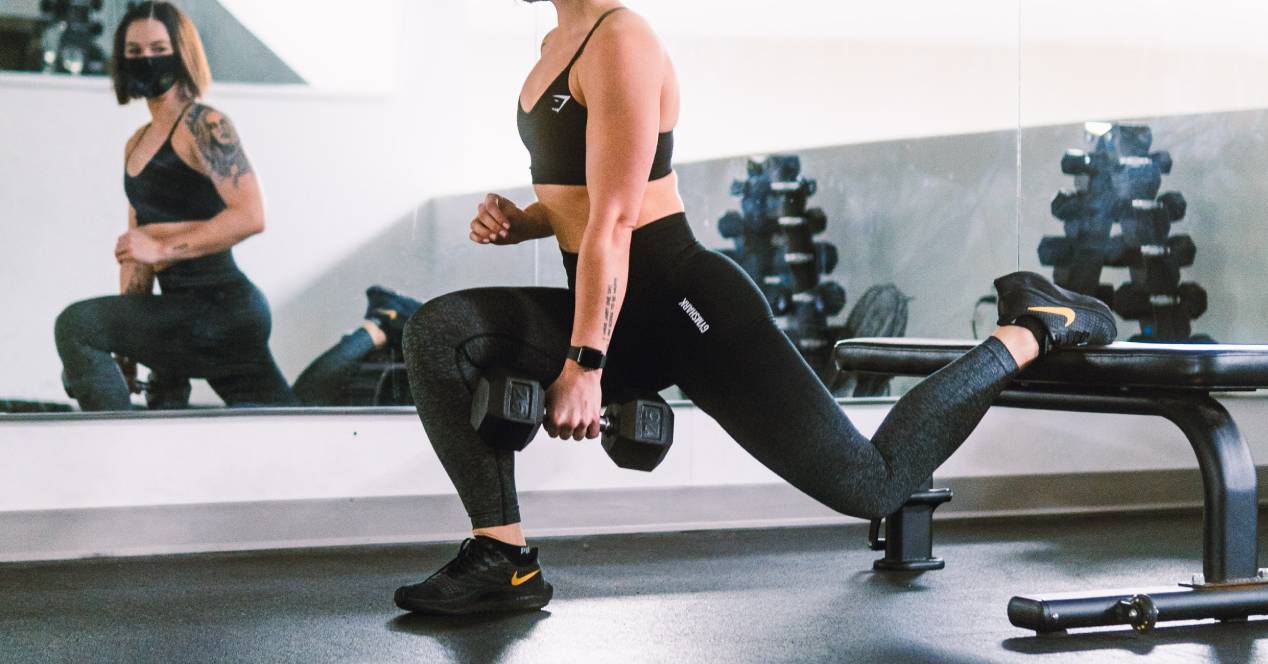
Official recommendations state that you should perform strength training at least twice a week. But only about a quarter of adults meet those requirements. That's almost half of the people who do cardio regularly.
Some people don't know how to resistance train and are worried about getting injured, while others have an injury or condition that prevents them from training with weights to their full capacity. Also, there is a misconception about strength training among some women, who think they can become too bulky or gain too much muscle.
Another common barrier is the «ingym shyness«, the lack of knowledge on how to use the weight lifting equipment. Women, in particular, report less comfort using gym facilities, including strength machines and free weights.
Why cardio is not enough?
We're not doing some fast-paced aerobic exercise, which is amazing for your health in so many ways. But if you don't also incorporate resistance work, your body will pay the price.
The muscles can atrophy; you will lose muscle mass and stamina because you are not using them as much. Your ligaments and tendons can also become weak.
Skipping strengthening is also bad for your bones. Strength training puts stress on the bones, which prompts the bone-building cells to act. If you don't do resistance exercise, your bones can become weak and lose some mineral content.
This is especially important for older adults, especially those who are postmenopausalas, as decreased estrogen levels lead to bone loss, which increases the risk of fractures.
Plus, if weight loss is your goal, you won't burn as many calories without resistance training. When you do a 30 minute cardio session, you are burning calories during those 30 minutes. But a 30-minute weight-lifting session will cause you to burn calories for the rest of the day, an effect known as excessive oxygen consumption after exercise.
This is because strength training, by placing microscopic stress on your muscles, puts your body into a state of recovery. That muscle recovery uses calories for energy.
Also, the more lean muscle you haves, more will increases tu basal metabolic rate, the number of calories you burn each day just to maintain normal biological function. Muscle is metabolically active, meaning it burns more calories at rest than body fat.

The benefits of strength training
You may still not be convinced. Resistance training has many benefits, even if you already have an aerobic routine. Because everything in the body is connected, having a strong muscular foundation is important in how the body moves, heals, and interacts with other bodily systems.
You will avoid injuries and promote recovery
Increasing the volume and intensity of your strength training is associated with reduced risk of sports injury risks, according to an August 2018 meta-analysis in the British Journal of Sports Medicine.
A 2017 report from the American College of Sports Medicine also shows that following a strength training program is associated with a lower incidence of stress fractures, falls and lower back injuries in people who are physically active.
And if you get injured? You'll recover faster and more efficiently if you've been sculpting muscle. Resistance training strengthens tendons and ligaments, which can help you recover from an injury, such as a sprained ankle or dislocated shoulder. It will also improve your balance and posture by strengthening the small stabilizers that keep you upright.
You will improve your athletic performance
Runners with a strength-training practice significantly improve their speed and endurance, according to a September 2019 study in the British Journal of Medicine. Increased muscle fiber size and contractile force lead to greater physical capacity.
Your strength training routine also allows you to become more powerful, stabilizes you in your yoga practice, and prepares you for days of snowboarding.
You can reduce your risk of disease
A November 2017 study in the Journal of the American Heart Association found that moderate strength training (between 100 and 145 minutes a week) is associated with a lower mortality risk from all causes in older women.
In fact, older adults age 65 and older who followed the recommended guidelines for strength training at least twice a week had a 46 percent lower odds of all-cause mortality than those who didn't, in a February 2016 study in Preventive Medicine.
Research shows that women who focus on strengthening their muscles reduce el type 2 diabetes risk by 30 percent y of cardiovascular disease by 17 percent compared to those who did not exercise for resistance, according to a January 2017 study.
The bottom line is that combining strength training with aerobic exercise is linked to an even lower risk of type 2 diabetes, cardiovascular disease, and early death than cardio alone.
Strength training improves your mood
According to a June 2018 meta-analysis in JAMA Psychiatry, resistance training reduces symptoms of mild to moderate depression. resistance training regulates blood flow and heart rate, which clears up brain fog and fills you with feel-good endorphins. As you perform new feats of strength, your mental strength and confidence will also improve.
All exercise improves mood because it increases endorphins. But for strength training, science says it offers a more pronounced positive effect on the brain.
You will reduce lower back pain
A small May 2020 study in BMC Sports Science, Medicine and Rehabilitation found that people with low back pain experienced significantly less discomfort and saw improvements in pain-related disability when they followed a strength training program.
Strengthening your core through resistance work supports your lumbar spine (lower back), relieving pressure and pain. It is especially recommended for people who have back injuries or spend too much time sitting throughout the day.
You will sleep better at night
Building muscle can even improve sleep, according to a small May 2015 study in the Journal of Strength and Conditioning Research, in which people fell asleep faster and had fewer nighttime awakenings on days they participated in resistance training.
We all know that a good night's sleep can go a long way in keeping you in the right mood. So try to introduce these types of workouts into your daily and weekly routine. It does not matter when you do it, if in the morning or in the afternoon.

What type of strength training is best?
There are many different ways to strength train, but the best modality for you depends on your abilities, goals, and needs. Below we discuss all types and their benefits.
free weights
Although both machines and free weights, such as dumbbells and kettlebells, allow you to gain a similar amount of muscle size and strength, free weights require more core involvement and activate more muscle groups than a machine. Without the support of a machine to keep you in the proper position, your body is forced to work harder to maintain your posture.
As a result, free weights are better for building muscle in the long run, compared to a machine that can only target specific muscles.
Strength training with weight machines
Because the machines provide more support, they can be a good bet for beginners who haven't perfected their technique yet. A machine is also great for improving your form and range of motion after an injury.
They're also a great way to build confidence before moving on to free weights. There are people who need more stability when lifting weights, without having the pressure of the bars falling off or not being able to lift them. In this case, the machines help a slow and careful progression of the technique.
Resistance bands
These are cheap and portable. Although they increase the size and strength of the muscles, in the long run, they will be less challenging. To make your strength workouts more challenging with resistance bands, you can add them to dumbbells or kettlebells.
They are perfect for bodyweight workouts that want to increase the intensity or for people just starting out in strength training. They are even recommended in rehabilitation processes so that the muscles can adapt to changes in weight and intensity. In addition, it has the advantage that they do not maintain the load throughout the movement, the less tense the band is, the lighter it will be.
body weight exercises
Bodyweight workouts use your own weight to provide resistance against gravity. The best part is that bodyweight exercises do not require any special equipment, such as weight machines, dumbbells, or even resistance bands. You can do it anytime, anywhere, which is especially helpful if you're avoiding the gym during the COVID-19 pandemic.
To build muscle through bodyweight training, increasea gradually the number of repetitions or entera but also failure, for example, doing squats until you physically can't do any more. You can also try a 'time under tension' workout, where you perform each movement very slowly so that it becomes more difficult.